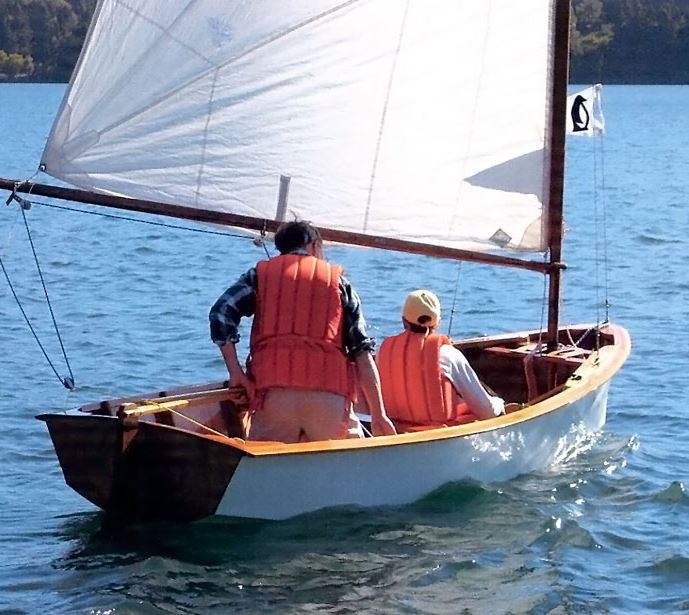Recently I visited the annual WoodenBoat Show held this year, for the first time, at the Chesapeake Bay Maritime Museum in St. Michaels, MD. One of the show events, a family boat building project, was particularly great to see and brought back more than a few fond memories.
I won’t bore everyone with all the details, but my first boat building project started when my Dad and I found a torn and tattered set of plans for a boat in the garage of a house we had recently moved into. Neither my Dad nor I had any boating or boat building experience at the time, but our new house just happened to be on the water, and it seemed like a fun summer project. The plans were for a small sailboat. Since our house was on a canal barely more than a hundred feet wide, we modified the plans a bit, eliminating the centerboard and adding oar locks to make a rowboat. Although it meant nothing to us at the time, the plans we had come across were for a Philip L. Rhodes design. What we built was perhaps the first and only Penguin rowboat.
Over the years, I have recalled the story many times of the fun and frustrations of this project. No doubt, there will be more than a few stories and reminiscences of fathers, mothers, sons and daughters of the summer weekend they spent building their first boat at the WoodenBoat Show in St. Michaels.
When Philip L. Rhodes went into business for himself as a naval architect in 1929, he adopted the motto "Any size, any type, any service". In the 45 years of practice that followed, Rhodes remained true to his motto and demonstrated his remarkable versatility as a naval architect with design projects ranging from a high speed, shoal draft river steamer for service on the Yangtse River to the 12-meter Weatherly which successfully defended the America’s Cup in 1964 to the venerable 11’ 5" Rhodes Penguin.
Designed in 1937, the Penguin has attained an international reputation. Perhaps more interesting to Chesapeake sailors is the history of the Penguin which has a very local genesis. Penguin Hull #1 was locally built for Potomac River Penguin Fleet #1 and is now on display at the Chesapeake Bay Maritime Museum in St. Michaels. More recently, The John Gardner School of Boatbuilding in Annapolis undertook a school project to build several Penguins that are now among the most recent additions to the nearly 10,000 boats built over the last 61 years.
The principal dimensions of the Penguin are 11’5" LOA, 4’ 8" beam, and sail area is 72 sq. feet. By class association rules, the hulls must weigh at least 140 lbs., although most completed boats weigh in at about 165 or 170 lbs.
Building a small boat can be a great individual or family project that will build confidence, self-esteem and be a wonderful learning experience for all involved. Although not the easiest of first-time boat building projects, the Penguin is within the ability of those who have the patience and willingness to do some studying on the subject first. The shape of the Penguin is made up of what are known as "developable surfaces" resulting in a design that is easier for the amateur to build. In simple terms, developable surfaces are those that can be formed from a flat sheet of material without stretching it. The importance of this to the boat builder is that the hull can be constructed of plywood.
The size and dimensions of the Penguin are tightly controlled by the class association rules; however, there are sufficient tolerances to allow for the slight miscalculation, and many Penguins have been successfully completed by first-time builders. However, if you’re a little less adventuresome, you may wish to locate an older boat in need of a little TLC. (By the way, unfortunately, I’m not related to the New Jersey boat builder Henry Horner who built many Penguins throughout the 50s and 60s.)
Once your project is complete, you won’t have to look far for sailing companions and spirited competition. The Penguin remains a popular class locally with fleets at Tred Avon YC, Cambridge, Potomac River Sailing Association, Round Bay, and West River, and the class attracts some of the area’s top sailors. Regattas and events take place around the area from April through December.
Reviewed by Jack Hornor for SpinSheet





